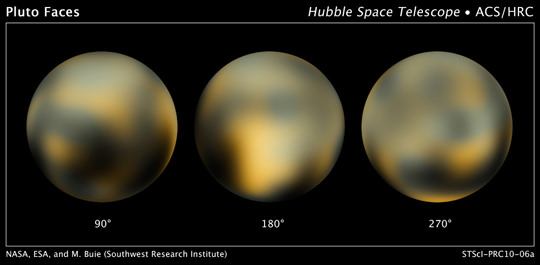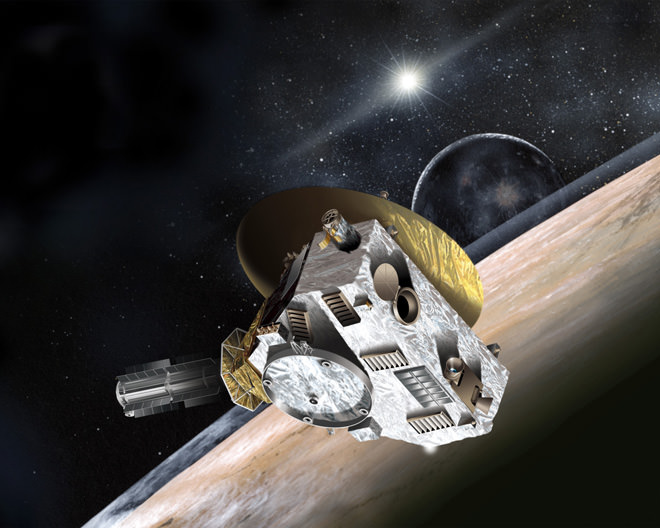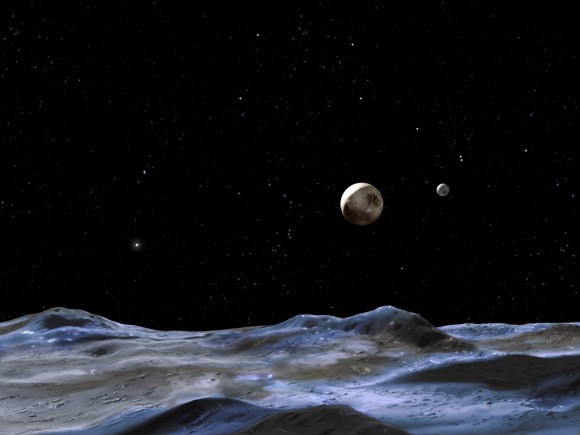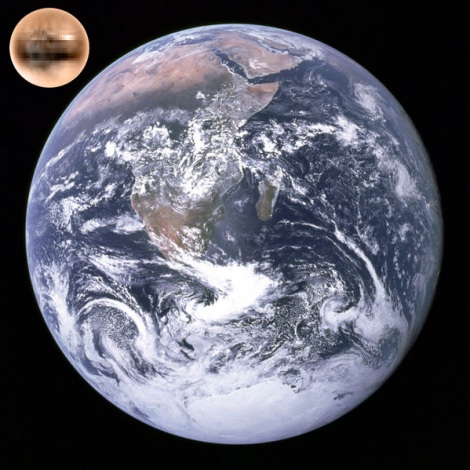Pluto-philes (and astronomers, too) have always bemoaned the fact that the best image of the principal dwarf planet wase just a fuzzy, pixelized haze. Bemoan no more. The most detailed look to date of the entire surface of Pluto has been constructed from hundreds of images taken by the Hubble Space Telescope. The images were taken during 2002 to 2003, and it took four years of computer crunching and software tweaking to create the global images. Surprisingly, the images show Pluto changed noticeably during the two-year photo shoot; the dwarf planet’s color became “redder,” and astronomers could see Pluto’s ice sheets were shifting.
“These Hubble pictures represent a true-color appearance of what you would see if you were near Pluto, comparable to looking at our own Moon with the naked eye,” said principal investigator Marc Buie of the Southwest Research Institute. “We now know we’re looking at something that has the biggest surface changes of any object in our solar system.”
The pictures show nitrogen ice growing and shrinking, getting brighter in the north and darker in the south.
Buie and planet hunter Mike Brown from Caltech introduced the Hubble images during a teleconference with reporters today, and emphasized how surprised they were with the changes seen on Pluto in just a relatively short period of time. Even accounting for seasonal changes, seasons can last 120 years in some regions of Pluto.
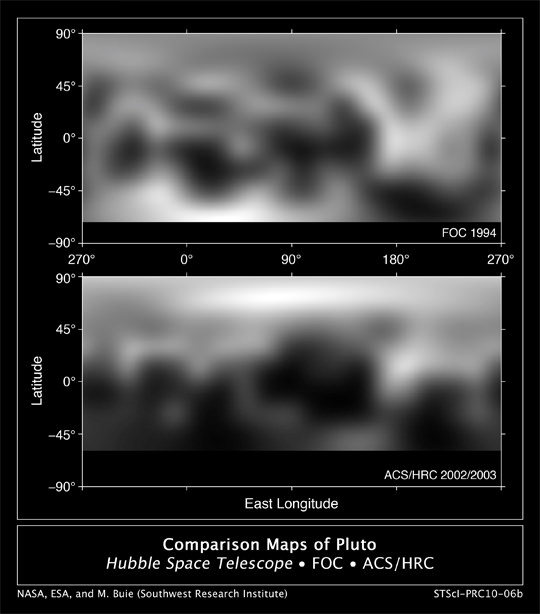
They said the images underscore that Pluto is not simply a ball of ice and rock but a dynamic world that undergoes dramatic atmospheric changes. While they believe the changes are driven by the seasons, it may mostly come from how quickly things can change on Pluto. The seasons are propelled as much by the planet’s 248-year elliptical orbit as its axial tilt — unlike Earth where the tilt alone drives seasons. On Pluto spring transitions to polar summer quickly in the northern hemisphere because Pluto is moving faster along its orbit when it is closer to the Sun.
“If Earth had such an extreme orbit, and we were experiencing a nice springtime day with 60-70 degree F temperatures, as the orbit changed it could suddenly drop to -90 degrees F,” said Brown.
There is also a mysterious bright spot on the center of Pluto, which has been observed in earlier images. But the spot is unusually rich in carbon monoxide frost.
Click here to see a video of Pluto rotating.
The astronomers said Pluto is so small and distant that the task of resolving the surface is as challenging as trying to see the markings on a soccer ball 40 miles away. Buie said we won’t have a better look at Pluto until the New Horizon’s spacecraft is six months away from the dwarf planet in 2015.
The images were taken with the Advanced Camera for Surveys on HST, and the 348 images taken in 2002 and 2003 were the last ones taken of Pluto with high enough resolution to be useful. “I had time allocated two years ago to look at Pluto, which came just three or four weeks after the high resolution camera failed,” Buie. “That was very disappointing.”
But the images do show Pluto is significantly redder than it had been for the past several decades. Astronomers use the word “red” to mean it reflects more red light than blue or green light. To the human eye, Pluto has a yellowish-orange color, and is about 20% redder than it used to be. “It’s not as red as the surface of Mars, but more red than Io,” Buie said.
Red is usually associated with carbon. The astronomers said there is also methane, which is not usually stable in an environment like Pluto’s.
“This business about the color change had me scared for awhile,” Buie confessed. “I got the result years ago, but it was so hard to understand and believe. I’m still nervous about it. It could be that I completely screwed this up, but I can tell you Charon is on the same images, and Charon has the same color throughout but Pluto changed. I don’t’ know how the camera system on HST could have given me the wrong colors on Pluto.”
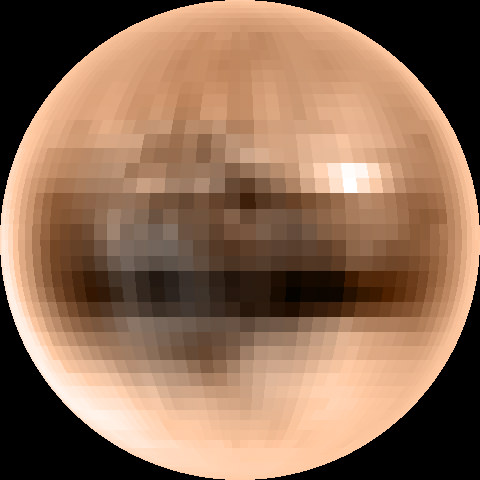
Someone suggested that Pluto is reddening because of its recent demotion from full planethood. “Yes, people have said that Pluto is mad at me,” said Brown, who has the nickname of the “Pluto killer” because he discovered other Kuiper Belt objects which led to the new class of dwarf planets.
“For a long time Pluto was this lonely oddball that we didn’t have anything else to compare it with,” said Brown. “Understanding this all as a new class of objects is a much more interesting way of looking at the solar system and it is quite a bit of fun, too.”
More information from Buie’s webpage on the Pluto images.
The paper about the images isn’t posted online yet, but it will be up on this webpage soon.
Source: Conference call.
Additional images and info from NASA

